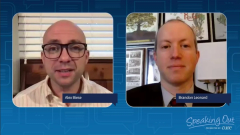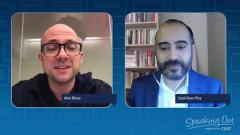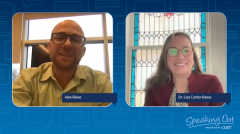
Chemo Shortage Didn’t Materialize ‘The Way We Initially Feared’
As part of its Speaking Out video series, CURE® spoke with Amy C. Moore of LUNGevity about the chemotherapy shortage and its impact on patients with lung cancer.
Episodes in this series
The chemotherapy shortage which commenced last spring and summer primarily affected common chemotherapy drugs used in lung cancer treatment, including platinum-based therapies like carboplatin and cisplatin, as well as methotrexate.
But, as Amy C. Moore, vice president of global engagement and patient partnerships for the LUNGevity Foundation explained, major academic medical centers implemented strategies to mitigate its impact. These measures include waste management strategies and adjustments to treatment schedules to stretch available supplies.
“So fortunately, it means that there hasn't been as severe an impact on patients as maybe we initially feared,” Moore said.
Speaking with CURE® as part of the “Speaking Out” video series, Moore discussed the critical issues posed by the chemotherapy shortage and its impact on patients with lung cancer, providing insights into the origins of the shortage, its implications for patients, available alternatives and the broader systemic challenges it has highlighted.
Moore noted that while major institutions have managed the shortage relatively well, disparities may still exist, particularly in rural or smaller healthcare facilities. However, efforts to address these disparities are ongoing, with the aim of ensuring equitable access to treatment for all patients, she said.
Regarding alternative options, facilities have been able to substitute one drug for another, such as using cisplatin in place of carboplatin. Although shortages persist to some extent, Moore noted a gradual easing of the situation and emphasized the importance of ongoing monitoring and preparedness to prevent future shortages.
The shortage additionally underscores broader systemic challenges within the healthcare system, with Moore highlighting financial pressures and manufacturing issues as contributing factors.
Moore also acknowledged the increasing demand for cancer treatments as survival rates improve, and emphasized the need for sustainable solutions to ensure an adequate drug supply to meet growing patient needs.
Regarding patient concerns, Moore emphasized the importance of open communication between patients and their healthcare providers, encouraging patients to discuss any concerns about drug availability and explore potential alternatives with their care teams.
“I think it can be very scary on the part of the patient to hear the news stories about this chemotherapy shortage is when it's such a standard part of lung cancer treatment for so many patients and it can obviously cause great anxiety,” said Moore. “So, I think it is important for patients if they're concerned about this to have those conversations with their healthcare team and to ask those questions, 'Well, if my drug is in short supply, what does that mean? Are there alternatives that I can take? How will it impact my treatment and my outcomes?'
“But thankfully ... a lot of facilities have implemented management strategies, including minimizing waste and lengthening the period maybe between some of those chemotherapy treatments to stretch out the supply. So thankfully, it hasn't materialized in the way that we initially feared.”










